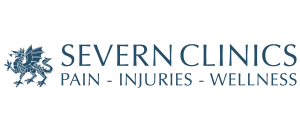3 Major Benefits To Wearing Custom Orthotics
Orthotics Intro
Data from the US insinuates that we spend billions of dollars per year on orthotics. With this many people using orthotics there must be a range of benefits to their use, but what are the main ones? Well, there are a huge number of specific benefits that people report once they start wearing orthotics that range from improvements in pain from plantar fasciitis to bursitis and even osteoarthritis.
We live in a time where there is an epidemic of lower body pain in the developed world. If we were to combine the social impact of all the back pain, hip pain, knee pain, ankle pain, foot pain and lower body osteoarthritis we would see that it is a modern healthcare disaster.
I believe that the 2 major factors that influence and create this incomprehensible mess created by a technologically advanced culture are the following…
Urban Terrain
Your ancestors lived their entire lives in bare feet on soft, pliable ground. You live most of your life on extremely hard, flat surfaces. Surfaces like concrete, paving and tarmac have no intrinsic shock absorption. This hard ground has a profound effect on our joints. Custom orthotics offer some natural support to the foot which helps the entire lower limb handle a life spent on hard ground.
Sedentary Lifestyle
I am going to go on record and say that I believe that we are only on average around 20% as active as our great grandparents were. The amount of sitting we do is completely unprecedented in the history of our species evolution. Inactivity is obviously a major cause of muscle weakness and muscle weakness is a major cause of pain. The combination of flexible custom orthotics and appropriate exercise prescription can assist greatly with this kind of weakness and the harm it does our bodies.
The Benefits Of Wearing Orthotics
There are 3 basic mechansims that form the basis of all the more tangible and specific help with symptoms that foot orthotics offer.
Orthotics Reduce Strain in the Foot & Ankle Joints
As a species we simply did not evolve to walk on hard flat surfaces…admittedly we did not evolve to use orthotics or shoes either .. there is no getting around these facts. Your ancestors walked on soft, uneven ground with a constantly shifting incline and camber. Orthotics take strain off the ankle and foot joints by mimicking some of the qualities of natural terrain
If you picture walking along the beach in bare feet, no shoes and no orthotics. Consider the range of textures depending on the wetness of the sand, consider the shifting angle depending on whether there are dunes and how fast the tide went out. Now picture barefoot in the forest. The terrain changes constantly in many forests, that leaf litter squashes up under your arch, you have to walk along fallen limbs. Now consider walking to work in the city. Complete hard flat homogeneous terrain, the occasional flight of stairs where each step is completely flat also. Try to picture how much more movement there would have been in your feet, and how much more support they would have had from surfaces that hug the contour of the foot.
The hard flat terrain causes huge amount of stress in the ankle joint because there is no shock absorption. Orthotics provide shock absorption and bring that stresses in the ankle joint down to slightly more normal levels.
Hard flat urban terrain does not hug the sole of the foot the same way that the majority of natural surfaces do, orthotics make up for this by hugging the foot and providing a contoured ‘base’ for the arch.
Orthotics Reduce Strain in the Knee Joints
People who specialise in the study of human bones down the ages can easily spot the ‘evolutionary moment’ where we started walking upright full time just by looking at leg bones. The ‘moment’ we started walking upright full time our knee joints essentially doubled in size due to the fact that the massive increase in stress and strain that caused. This is probably the best illustration of what our knees go through and what it means for the skeleton I can offer you.
By supporting the arch orthotics reduce ‘torsional stress’ in the knee joint because the knee twists inwards if the arch drops. By providing positional control to the position of the calcaneus (heel bone) orthotics can also help prevent with the slight collapse that happens in the knees of people with flat feet who live on hard flat surfaces. These reductions in small but persistent unnatural movements during weight bearing are the basis of all the benefits that orthotics provide to the hard working human knee.
Orthotics reduce strain in the hip & pelvic tissues.
The hip and it’s associated muscles play a key role in maintaining foot alignment during weight bearing activities. When the arch collapses there are ‘internal rotations’ of the hip joint. The hip and the associated hips muscles have no issues with a moderate amount of internal rotation at the hip joint during weight bearing but like so many things too much is not healthy and the body can struggle to cope.
The hip and gluteal muscles play such a massive role in preventing the arch from collapsing under your body weight that if they can become the first area to experience pain in many people who are struggling with a need for custom orthotics. People who experience tight, sore hips and ‘lower backs’ after long walks and runs are just starting to notice the first signs that their hips are struggling with foot alignment.

Leave a Reply
Want to join the discussion?Feel free to contribute!